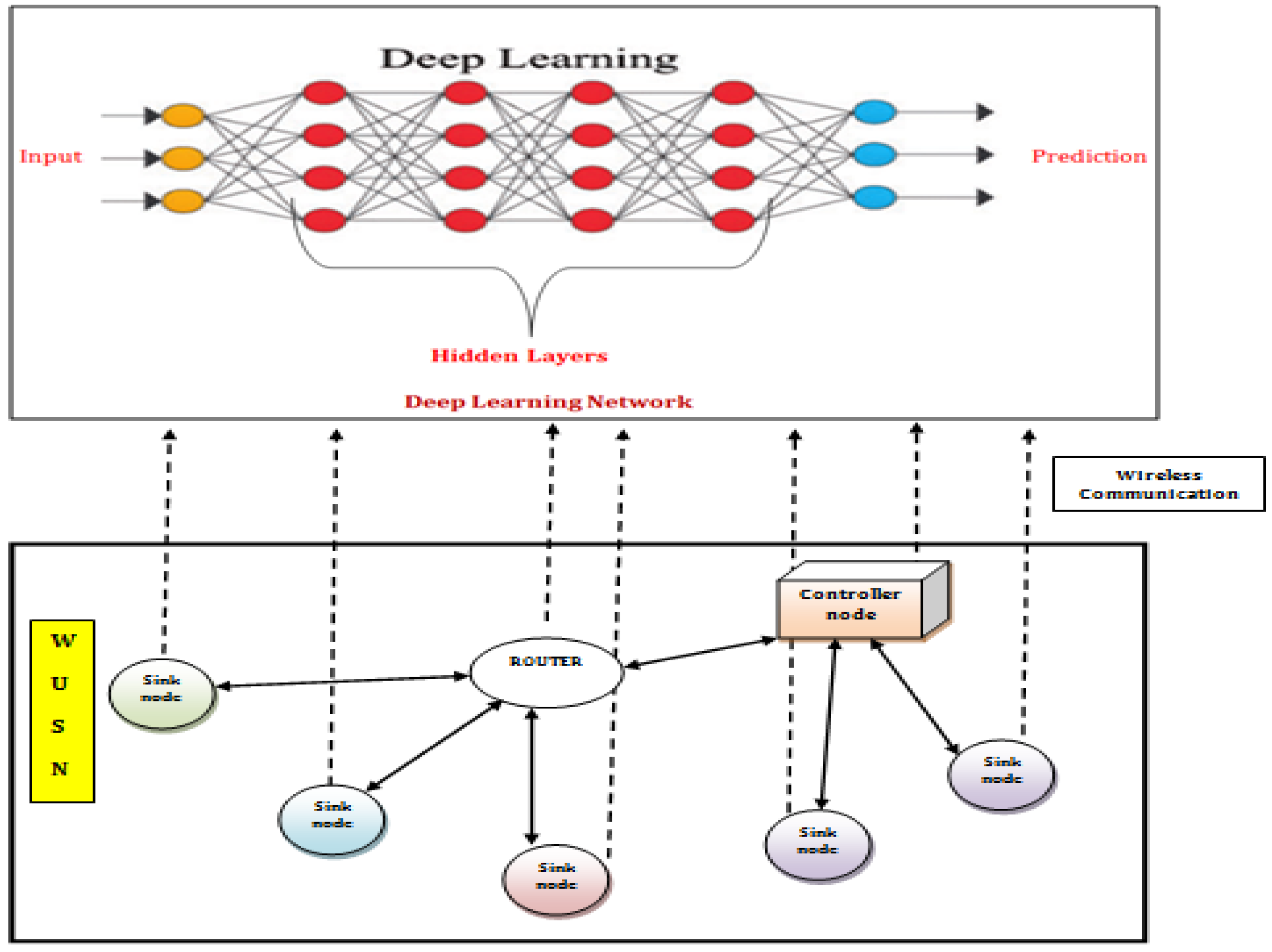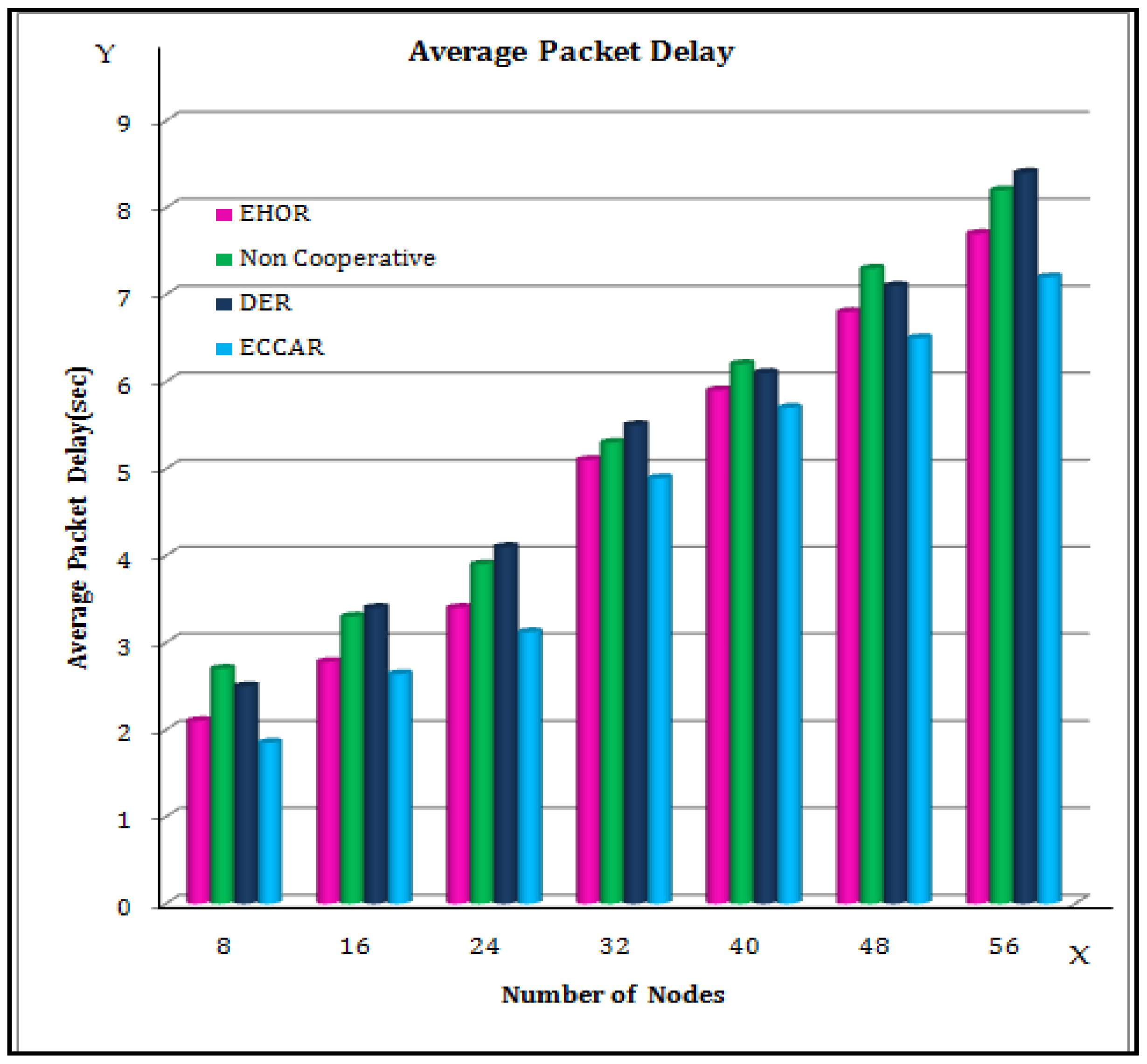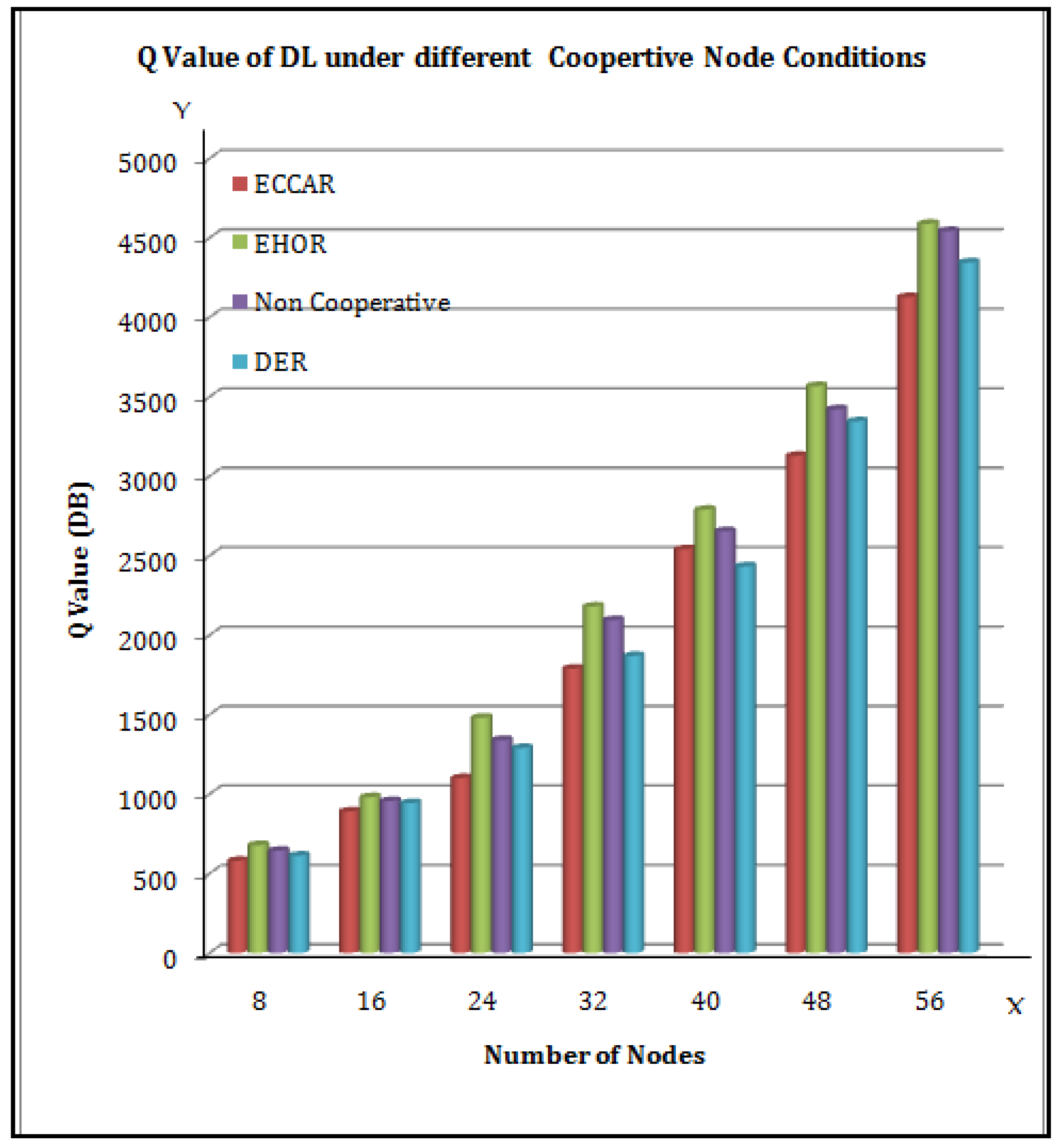A Novel Deep Learning-Based Cooperative Communication Channel Model for Wireless Underground Sensor Networks
Abstract
:1. Introduction
2. Related Works
3. Deep Learning vs. Machine Learning (ML) in Underground Wireless Sensor Network Environment
- DL needs more unlabeled training data than ML does to make accurate decisions, because ML users use less data [23].
- DL is in need of high-performance hardware.
- ML needs certain functionalities to be precisely found by users, but DL creates fresh functionalities by itself.
- ML breaks up the work into smaller pieces before putting the final results together to make a decision. On the other hand, DL fixes mistakes in the order in which they were made [24].
- When compared with ML, DL requires a long time to provide training.
- DL is able to offer sufficient steps and procedures for making decisions.
4. Proposed Deep Learning Based Cooperative Communication Channel Model for WUSNs
4.1. Energy Model for DL Based Cooperative WUSN Communication Channel
- q denotes the maximum number of information packets transmitted;
- ar denotes the level of aspect ratio depending on the wireless communication case;
- lw is the length and width of the sensor nodes, which is denoted by d.
- £ampl is the set of enhancing equations needed to achieve a low bit error rate and reliable broadcaster responses.
- Edtx is the energy dissolute to function for the sender/receiver and is expressed by
- Vcc indicates the operational power.
- Ctp species the power for communication procedure
- qdr represents the information transmit velocity
4.2. DL Based Routing Model in WUSN
| Algorithm 1 Multi-Cooperative Communication Channel Path Routing |
| Initiate position = IP, Final position = fp, Quality of Service intensity = δ Least obtainable bandwidth of present connection = bw available the volume amount of traffic = bwmin (s, r) routing = routing values of sender/receiver pp ← present topology While bwmin > 0 Configure monitoring valueset preprocessing condition of packets = Sp, Initialize buffer pool storage amount Loop traversal: C = the data package’s choice of operation, Perform the operation C to get re, se Keep these values re, se, C to buffer pool storage If the information in the memory pool is sufficient Calculate _ Computation of the net carry away percentage Computation Q (re, se, C; θ) From Eval _ Net to target _ Net, there are N phases. Target _ Subtract the sampling computation from the net value Computation Q (r’e, s’e, C’; θ’) Preparation neural network to obtain direction Break Else if ip’ = fp Else ip = ip’ Final position Routing (s,d) ← Routing Using two nodes in this routing, least amount obtainable bandwidth If bw available ≤ bwmin t[nodes] = 0, to update t |
5. DL Based Transmission Path Selection in WUSN
- wusnsn is the information from the original sensor network being sent to sensor node
- Wway is a set of sensor nodes that participate in the transmission of sensory input from the WUSN to the sensor node.
- Cway is a series of connections between two points of Wway.
- Possway is a collection of possibilities for different paths of Epath.
- Engway is a collection of energy necessities for the transmission of sensory information from WUSNsn to SN.
- Possway is a collection of possibilities for different paths of wusnx to wusnx+1
6. Experimental Results and Discussion
- The maximum path loss can be computed using the highest transmission rate and the shortest reception strength measurements [43]. It is understood that the path loss is affected by the distance between the source and the destination. The operating frequency is set at 900 MHz.
- Based on the energy equation to fix the energy of the underground sensors to 100 J and the packet size to 125 bits [44].
- The ratios for power consumption and the dynamic routing factor are chosen to highlight the equal priority of electricity usage and load balancing factor. The path probability is chosen to ensure the reliability of the transmission pathways [27].
7. Summary of Contribution
8. Conclusions
Author Contributions
Funding
Institutional Review Board Statement
Informed Consent Statement
Data Availability Statement
Conflicts of Interest
References
- Zhang, C.; Patras, P.; Haddadi, H. Deep Learning in Mobile and Wireless Networking: A Survey. IEEE Commun. Surv. Tutor. 2019, 21, 2224–2287. [Google Scholar] [CrossRef] [Green Version]
- Kanthavel, R.; Banumathi, J.; Dhaya, R.; Algarni, F. On demand knowledge-based memory-aided rebroadcast algorithm for multimedia voice data transmission in MANET. Concurr. Comput. Pract. Exp. 2018, 31, e5016. [Google Scholar] [CrossRef]
- Yoon, S.-U.; Cheng, L.; Ghazanfari, E.; Pamukcu, S.; Suleiman, M.T. A Radio Propagation Model for Wireless Underground Sensor Networks. In Proceedings of the IEEE Global Telecommunications Conference—GLOBECOM, Houston, TX, USA, 5–9 December 2011; pp. 1–5. [Google Scholar] [CrossRef]
- Dhaya, R.; Kanthavel, R.; Ahilan, A. Developing an energy-efficient ubiquitous agriculture mobile sensor network-based threshold built-in MAC routing protocol (TBMP). Soft Comput. 2021, 25, 12333–12342. [Google Scholar] [CrossRef]
- Sangeetha, S.K.B.; Dhaya, R.; Kanthavel, R. Improving performance of cooperative communication in heterogeneous manet environment. Clust. Comput. 2018, 22, 12389–12395. [Google Scholar] [CrossRef]
- Kanthavel, R.; Dhaya, R. Enlightening Enactment of Cooperative Communication in Heterogeneous Mobile Ad-Hoc Networks Surroundings. Gedrag Organ. Rev. 2020, 33, 1444–1460. [Google Scholar]
- Kanthavel, R.; Dhaya, R. Proactive Cooperative Communication Enabled Fifth Generation Wireless Sensor Network Using SCTP. In Proceedings of the National Computing Colleges Conference (NCCC), Taif, Saudi Arabia, 27–28 March 2021; pp. 1–5. [Google Scholar] [CrossRef]
- Gungor, V.C.; Lu, B.; Hancke, G. Opportunities and Challenges of Wireless Sensor Networks in Smart Grid. IEEE Trans. Ind. Electron. 2010, 57, 3557–3564. [Google Scholar] [CrossRef] [Green Version]
- Ge, Y.; Nan, Y.; Guo, X. Maximizing network throughput by cooperative reinforcement learning in clustered solar-powered wireless sensor networks. Int. J. Distrib. Sens. Netw. 2021, 17. [Google Scholar] [CrossRef]
- Kisseleff, S.; Akyildiz, I.F.; Gerstacker, W.H. Survey on Advances in Magnetic Induction-Based Wireless Underground Sensor Networks. IEEE Internet Things J. 2018, 5, 4843–4856. [Google Scholar] [CrossRef]
- Huang, H.; Shi, J.; Wang, F.; Zhang, D.; Zhang, D. Theoretical and Experimental Studies on the Signal Propagation in Soil for Wireless Underground Sensor Networks. Sensors 2020, 20, 2580. [Google Scholar] [CrossRef]
- Zungeru, A.M.; Chuma, J.; Mangwala, M.; Sigweni, B.; Matsebe, O. Signal Propagation and Analysis in Wireless Underground Sensor Networks. Int. J. Eng. Res. Afr. 2019, 41, 60–78. [Google Scholar] [CrossRef]
- Teruhi, S.; Yamaguchi, Y.; Akahani, J. Water Leakage Detection System for Underground Pipes by Using Wireless Sensors and Machine Learning. J. Disaster Res. 2017, 12, 557–568. [Google Scholar] [CrossRef]
- Zhao, D.; Zhou, Z.; Wang, S.; Liu, B.; Gaaloul, W. Reinforcement learning–enabled efficient data gathering in underground wireless sensor networks. Pers. Ubiquitous Comput. 2020, 1–18. [Google Scholar] [CrossRef]
- Rashid, S.; Akram, U.; Khan, S.A. WML: Wireless Sensor Network based Machine Learning for Leakage Detection and Size Estimation. Procedia Comput. Sci. 2015, 63, 171–176. [Google Scholar] [CrossRef] [Green Version]
- Wang, S.; Shin, Y. Efficient Routing Protocol Based on Reinforcement Learning for Magnetic Induction Underwater Sensor Networks. IEEE Access 2019, 7, 82027–82037. [Google Scholar] [CrossRef]
- Wang, K.I.-K.; Wu, S.; Ivoghlian, A.; Salcic, Z.; Austin, A.; Zhou, X. LWS: A LoRaWAN Wireless Underground Sensor Network Simulator for Agriculture Applications. In Proceedings of the 2019 IEEE SmartWorld, Ubiquitous Intelligence & Computing, Advanced & Trusted Computing, Scalable Computing & Communications, Cloud & Big Data Computing, Internet of People and Smart City Innovation (SmartWorld/SCALCOM/UIC/ATC/CBDCom/IOP/SCI), Leicester, UK, 19–23 August 2019; pp. 475–482. [Google Scholar] [CrossRef]
- Silva, B.; Fisher, R.M.; Kumar, A.; Hancke, G.P. Experimental Link Quality Characterization of Wireless Sensor Networks for Underground Monitoring. IEEE Trans. Ind. Inform. 2015, 11, 1099–1110. [Google Scholar] [CrossRef] [Green Version]
- Tan, X.; Sun, Z.; Akyildiz, I.F. Wireless Underground Sensor Networks: MI-based communication systems for underground applications. IEEE Antennas Propag. Mag. 2015, 57, 74–87. [Google Scholar] [CrossRef]
- Stuntebeck, E.P.; Pompili, D.; Melodia, T. Wireless underground sensor networks using commodity terrestrial motes. In Proceedings of the IEEE Workshop on Wireless Mesh Networks, Reston, VA, USA, 25–28 September 2006; pp. 112–114. [Google Scholar] [CrossRef] [Green Version]
- Singh, A.P.; Luhach, A.K.; Gao, X.-Z.; Kumar, S.; Roy, D.S. Evolution of wireless sensor network design from technology centric to user centric: An architectural perspective. Int. J. Distrib. Sens. Netw. 2020, 16. [Google Scholar] [CrossRef]
- Sharma, V.; Patel, R.B.; Bhadauria, H.S.; Prasad, D. Deployment schemes in wireless sensor network to achieve blanket coverage in large-scale open area: A review. Egypt. Inform. J. 2016, 17, 45–56. [Google Scholar] [CrossRef] [Green Version]
- Leong, A.S.; Arunselvan, R.; Quevedo, D.E.; Karl, H.; Shi, L. Deep reinforcement learning for wireless sensor scheduling in cyber–physical systems. Automatica 2020, 113, 108759. [Google Scholar] [CrossRef] [Green Version]
- Janniekode, U.M.; Somineni, R.P.; Khalaf, O.I.; Itani, M.M.; Babu, J.C.; Abdulsahib, G.M. A Symmetric Novel 8T3R Non-Volatile SRAM Cell for Embedded Applications. Symmetry 2022, 14, 768. [Google Scholar] [CrossRef]
- Elsisi, M.; Tran, M.Q.; Mahmoud, K.; Mansour, D.E.; Lehtonen, M.; Darwish, M.M. Effective IoT-based deep learning platform for online fault diagnosis of power transformers against cyberattacks and data uncertainties. Measurement 2021, 190, 110686. [Google Scholar] [CrossRef]
- Mohan, P.; Subramani, N.; Alotaibi, Y.; Alghamdi, S.; Khalaf, O.I.; Ulaganathan, S. Improved Metaheuristics-Based Clustering with Multihop Routing Protocol for Underwater Wireless Sensor Networks. Sensors 2022, 22, 1618. [Google Scholar] [CrossRef] [PubMed]
- Dhaya, R.; Kanthavel, R. Video Surveillance-based Urban Flood Monitoring System using a Convolutional Neural Network. Intell. Autom. Soft Comput. 2022, 32, 183–192. [Google Scholar] [CrossRef]
- Sangeetha, S.K.B.; Dhaya, R. Deep Learning Era for Future 6G Wireless Communications—Theory, Applications, and Challenges. In Artificial Intelligent Techniques for Wireless Communication and Networking; Scrivener Publishing LLC: Beverly, MA, USA, 2022; pp. 105–119. [Google Scholar]
- Sharma, B.; Hashmi, A.; Gupta, C.; Khalaf, O.I.; Abdulsahib, G.M.; Itani, M.M. Hybrid Sparrow Clustered (HSC) Algorithm for Top-N Recommendation System. Symmetry 2022, 14, 793. [Google Scholar] [CrossRef]
- Anuradha, D.; Subramani, N.; Khalaf, O.I.; Alotaibi, Y.; Alghamdi, S.; Rajagopal, M. Chaotic Search-and-Rescue-Optimization-Based Multi-Hop Data Transmission Protocol for Underwater Wireless Sensor Networks. Sensors 2022, 22, 2867. [Google Scholar] [CrossRef]
- Edeh, M.O.; Khalaf, O.I.; Tavera, C.A.; Tayeb, S.; Ghouali, S.; Abdulsahib, G.M.; Richard-Nnabu, N.E.; Louni, A. A Classification Algorithm-Based Hybrid Diabetes Prediction Model. Front. Public Health 2022, 10, 829519. [Google Scholar] [CrossRef]
- Tran, M.-Q.; Elsisi, M.; Liu, M.-K.; Vu, V.Q.; Mahmoud, K.; Darwish, M.M.F.; Abdelaziz, A.Y.; Lehtonen, M. Reliable Deep Learning and IoT-Based Monitoring System for Secure Computer Numerical Control Machines Against Cyber-Attacks With Experimental Verification. IEEE Access 2022, 10, 23186–23197. [Google Scholar] [CrossRef]
- Zheng, J.; Lu, C.; Hao, C.; Chen, D.; Guo, D. Improving the Generalization Ability of Deep Neural Networks for Cross-Domain Visual Recognition. IEEE Trans. Cogn. Dev. Syst. 2020, 13, 607–620. [Google Scholar] [CrossRef]
- Sundas, A.; Badotra, S.; Alotaibi, Y.; Alghamdi, S.; Khalaf, O.I. Modified Bat Algorithm for Optimal VM’s in Cloud Computing. Comput. Mater. Contin. 2022, 72, 2877–2894. [Google Scholar] [CrossRef]
- Wang, X.; Liu, J.; Liu, X.; Liu, Z.; Khalaf, O.I.; Ji, J.; Ouyang, Q. Ship feature recognition methods for deep learning in complex marine environments. Complex Intell. Syst. 2022, 1–17. [Google Scholar] [CrossRef]
- Dhaya, R.; Maharaj, S.; Sowmya, J.; Kanthavel, R. Software defined networking: Viewpoint from IP networking, PROS nd CONS and exploration thoughts. In Proceedings of the International Conference on Intelligent Computing and Control Systems (ICICCS), Madurai, India, 15–16 June 2017; pp. 101–105. [Google Scholar] [CrossRef]
- Jayapradha, J.; Prakash, M.; Alotaibi, Y.; Khalaf, O.I.; Alghamdi, S.A. Heap Bucketization Anonymity—An Efficient Privacy-Preserving Data Publishing Model for Multiple Sensitive Attributes. IEEE Access 2022, 10, 28773–28791. [Google Scholar] [CrossRef]
- Banumathi, J.; Sangeetha, S.K.B.; Dhaya, R. Robust Cooperative Spectrum Sensing Techniques for a Practical Framework Employing Cognitive Radios in 5G Networks. In Artificial Intelligent Techniques for Wireless Communication and Networking; Scrivener Publishing LLC: Beverly, MA, USA, 2022; pp. 121–138. [Google Scholar]
- Kanthavel, R.; Dhaya, R. Wireless Underground Sensor Networks Channel Using Energy Efficient Clustered Communication. Intell. Autom. Soft Comput. 2022, 31, 649–659. [Google Scholar] [CrossRef]
- Dhaya, R.; Kanthavel, R.; Bangali, H. Perspectives on Deep Learning Techniques for Industrial IoT. In Machine Vision for Industry 4.0; CRC Press: Boca Raton, FL, USA, 2022; pp. 79–100. [Google Scholar] [CrossRef]
- Kavitha, C.; Mani, V.; Srividhya, S.R.; Khalaf, O.I.; Romero, C.A.T. Early-Stage Alzheimer’s Disease Prediction Using Machine Learning Models. Front. Public Health 2022, 10, 853294. [Google Scholar] [CrossRef] [PubMed]
- Tang, Z.; Luo, L.; Xie, B.; Zhu, Y.; Zhao, R.; Bi, L.; Lu, C. Automatic Sparse Connectivity Learning for Neural Networks. IEEE Trans. Neural Netw. Learn. Syst. 2022, 1–15. [Google Scholar] [CrossRef]
- Hemavathi; Akhila, S.R.; Alotaibi, Y.; Khalaf, O.I.; Alghamdi, S. Authentication and Resource Allocation Strategies during Handoff for 5G IoVsUsing Deep Learning. Energies 2022, 15, 2006. [Google Scholar] [CrossRef]
- Puri, T.; Soni, M.; Dhiman, G.; Khalaf, O.I.; Alazzam, M.; Khan, I.R. Detection of Emotion of Speech for RAVDESS Audio Using Hybrid Convolution Neural Network. J. Health Eng. 2022, 2022, 8472947. [Google Scholar] [CrossRef]
- Khalaf, O.I.; Romero, C.A.T.; Hassan, S.; Iqbal, M.T. Mitigating Hotspot Issues in Heterogeneous Wireless Sensor Networks. J. Sens. 2022, 2022, 7909472. [Google Scholar] [CrossRef]
- El-Saleh, A.A.; Alhammadi, A.; Shayea, I.; Alsharif, N.; Alzahrani, N.M.; Khalaf, O.I.; Aldhyani, T.H.H. Measuring and Assessing Performance of Mobile Broadband Networks and Future 5G Trends. Sustainability 2022, 14, 829. [Google Scholar] [CrossRef]
- Subramani, N.; Mohan, P.; Alotaibi, Y.; Alghamdi, S.; Khalaf, O.I. An Efficient Metaheuristic-Based Clustering with Routing Protocol for Underwater Wireless Sensor Networks. Sensors 2022, 22, 415. [Google Scholar] [CrossRef]
- Kurkova, V.; Sanguineti, M. Classification by Sparse Neural Networks. IEEE Trans. Neural Netw. Learn. Syst. 2019, 30, 2746–2754. [Google Scholar] [CrossRef]
- Hao, C.; Chen, D. Software/Hardware Co-design for Multi-modal Multi-task Learning in Autonomous Systems. In Proceedings of the 2021 IEEE 3rd International Conference on Artificial Intelligence Circuits and Systems (AICAS), Washington, DC, USA, 6–9 June 2021; pp. 1–5. [Google Scholar] [CrossRef]









Publisher’s Note: MDPI stays neutral with regard to jurisdictional claims in published maps and institutional affiliations. |
© 2022 by the authors. Licensee MDPI, Basel, Switzerland. This article is an open access article distributed under the terms and conditions of the Creative Commons Attribution (CC BY) license (https://creativecommons.org/licenses/by/4.0/).
Share and Cite
Radhakrishnan, K.; Ramakrishnan, D.; Khalaf, O.I.; Uddin, M.; Chen, C.-L.; Wu, C.-M. A Novel Deep Learning-Based Cooperative Communication Channel Model for Wireless Underground Sensor Networks. Sensors 2022, 22, 4475. https://doi.org/10.3390/s22124475
Radhakrishnan K, Ramakrishnan D, Khalaf OI, Uddin M, Chen C-L, Wu C-M. A Novel Deep Learning-Based Cooperative Communication Channel Model for Wireless Underground Sensor Networks. Sensors. 2022; 22(12):4475. https://doi.org/10.3390/s22124475
Chicago/Turabian StyleRadhakrishnan, Kanthavel, Dhaya Ramakrishnan, Osamah Ibrahim Khalaf, Mueen Uddin, Chin-Ling Chen, and Chih-Ming Wu. 2022. "A Novel Deep Learning-Based Cooperative Communication Channel Model for Wireless Underground Sensor Networks" Sensors 22, no. 12: 4475. https://doi.org/10.3390/s22124475
APA StyleRadhakrishnan, K., Ramakrishnan, D., Khalaf, O. I., Uddin, M., Chen, C.-L., & Wu, C.-M. (2022). A Novel Deep Learning-Based Cooperative Communication Channel Model for Wireless Underground Sensor Networks. Sensors, 22(12), 4475. https://doi.org/10.3390/s22124475








